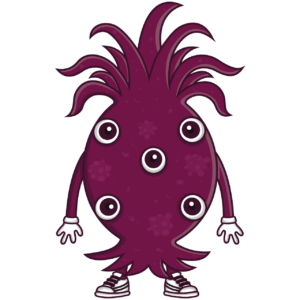GENERALIZED ANXIETY DISORDER (GAD)
- Excessive worry and fear about anything and everything, including your own thoughts.
- Inability to relax or feel comfortable with oneself.
- Unable to control the anxiety.
- Difficulties with sleep/insomnia.
- Loss or no appetite, usually accompanied by weight loss at the onset of GAD.
- Feeling tense, breathing fast/ hyperventilating, fatigue, digestive problems and other physical symptoms linked to hyper arousal.
- Preoccupation with one’s thoughts.
OBSESSIVE-COMPULSIVE DISORDER (OCD)
- Uncontrollable and repetitive thoughts/ideas/sensations (obsessions) that forces you to act upon them (compulsion).
- Typical obsessions: Fear of getting contaminated by people or the environment; Disturbing sexual thoughts or images; Fear of blurting out obscenities or insults; Extreme concern with order, symmetry, or precision; Recurrent intrusive thoughts of sounds, images, words, or numbers; AND Fear of losing or discarding something important.
- Typical compulsions: Excessive or ritualized hand washing, showering, brushing teeth, or toileting; Repeated cleaning of household objects; Ordering or arranging things in a particular way; Repeatedly checking locks, switches, or appliances; Constantly seeking approval or reassurance; AND Repeated counting to a certain number
- Compulsions are only meant to alleviate the worries and fear triggered by the obsessions.
- The severity of symptoms is usually gradual.
AGORAPHOBIA
- Excessive fear/ anxiety related to being in a public or crowded place, from which a potential escape is difficult, or help may not be readily available.
- The anxiety is usually triggered by the fear that a panic attack or panic-like symptoms may occur in those situations.
- The person usually avoids being in those situations or endure them with extreme anxiety. Typically, a person with agoraphobia tend to be homebound.
- Often the person with agoraphobia experiences social isolation and depression.
- It usually develops after a stressful even or the experience of a panic attack.
POST-TRAUMATIC STRESS DISORDER (PTSD)
- Intense anxiety following the experience of witnessing of a terrifying event(s) or trauma.
- Common symptoms of PTSD:vivid flashbacks (feeling like the trauma is happening right now); intrusive thoughts or images; and nightmares.
- Intense distress at real or symbolic reminders of the trauma.
- Physical sensations such as pain, sweating, nausea or trembling.
- The person typically relives the trauma through out-of-the blue flashbacks and nightmares.
- Avoid thinking about or feeling emotions about the trauma, which can interfere with your emotional recovery and healing.
- The trauma in itself can be insignificant to an outsider, because what really matters is how it has affected the person, and thus the trauma is really subjective.
PANIC DISORDER (PD)
- Unexpected and repeated episodes of intense fear accompanied by physical symptoms that may include chest pain, heart palpitations, shortness of breath, dizziness, or abdominal distress. (panic attacks).
- Not everyone who experiences a panic attack will develop PD.
- Panic attacks can occur as frequently as several times a day or as rarely as a few times a year.
- Fearing/worrying about another panic attack, the person may make significant changes in their life, including avoiding certain situations.
- Physical symptoms during a panic attack, such as: pounding or racing heart, sweating, chills, trembling, difficulty breathing, weakness or dizziness, tingly or numb hands, chest pain, and stomach pain or nausea
SOCIAL ANXIETY DISORDER (SAD)
- Intense and persistent fear of being watched and judged by others.
- Everyday interactions cause significant anxiety, self-consciousness and embarrassment because you fear being scrutinized or judged negatively by others.
- The anxiety/fear leads to avoidance of social situations
- Tendency to analyze your performance and find flaws in your interactions after a social situation
- Expect the worst possible consequences from a negative experience during a social situation
- Experience anxiety in anticipation of a feared social activity or event.
- Generalized social anxiety denotes a pervasive form of social anxiety with fear and avoidance of a wide range of social situations. It is also the most disabling form of the illness.
- Studies do not report cases of childhood maltreatment in social anxiety, but they consistently show that behavioral inhibition, a heritable temperamental trait, is commonly an antecedent to the development of social anxiety.
